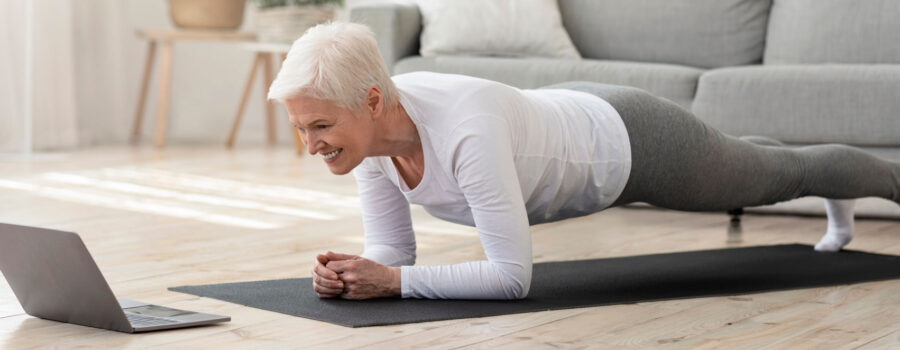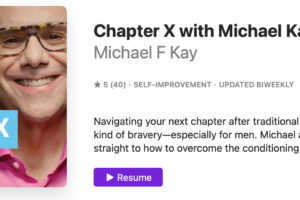NOTE: This guest column about free biohacks you can start today is from Jeffrey Tucker, DC, DACRB. Dr. Tucker is a friend and one of our go-to experts when clients have physical issues involving pain, mobility issues and injuries. He is an avid biohacker and always seeks out innovative, healing-first modalities. This post is excerpted from Dave Asprey’s Upgrade Collective. For even more from Dr. Tucker, see his blog here
I am so about cellular health, energy production, youthful-aging, longevity, and all of that. I have a message that I want to remind everyone of that some of our best health tools and techniques are free. Having been in continuous private practice for over 40 years gives me insight to the way people age. I’m blessed that I have many patients that started with me when I was an intern in Chiropractic College. If you were 35 years old then, you’d be 75 years old now. Some are 80 and 90+. I’ve seen first-hand those that are aging well (and not) using diet, exercise, staying social, etc. For most of my patients it was the Mediterranean Diet that reigned supreme. Over the years I learned about the benefits (or not so good) of other diets, personalized medicine and now precision medicine. The Keto diet has been remarkable for fat loss and better brain function.
Here’s my message. A sound healthy aging plan must include a balance of physical range of motion movements, flexibility, strength, cardio, and endurance. Without proper flexibility, range of motion, strength, cardio and endurance of the human body/brain, healthy (youthful) aging success is minimized, and chance of injury, or loss of balance that can make you susceptible to falls, loss of muscle mass, poor lunge function, broken bones, etc. may be increased. I encourage everyone to work to improve his or her range of motion and movement skills to maximize longevity and not ‘lose it’ along the way, and please help yourself to decrease the chance of injury.
Strength training is a very important part of a complete healthy aging plan. We have many choices here, i.e. body weight exercises, bands, kettlebells, free weights, isometrics, blood flow restriction and more. What’s your plan so that year after year you increase or at least maintain performance rather than lose it? A good strength training program will help improve your mobility, stability, and symmetry across general and specific movements. No matter what age you are start with two to three days per week initially, focusing on core strength and pillar strength, mobility, symmetrical movements, and strength. A minute of each will go a long way!
Flexibility is far more than just static stretching. Flexibility is done to restore tissue length and to prevent long-term overuse injury. Older patients that move well feel young! Stiff people feel old. It’s important to include dynamic flexibility drills and soft-tissue work in this discussion. Static stretching still has its merits. I know Dave likes Egosque and I still do too. In fact Egosgue was the first corrective exercise system I got proficient at to teach my patients about 30 years ago. Over the years I saw patient’s preference towards yoga and Pilates. Today I encourage ELDOA as much as Pilates or yoga for healthy musculoskeletal aging.
Learning to stretch one muscle can make it easier to activate an opposing muscle. For example, stretch your tight hip flexors and then do butt work. Likewise, use stretching to break down tight fascia and scar tissue. Stretching helps blood vessel flexibility too and properly realigns new tissues following an injury or surgery.

Dynamic flexibility or mobility drills are important because they train stability and range of motion simultaneously; surprisingly, having a lot of range of motion without stability actually increases your risk of injury. If you are really loose in your joints you likely need more strength training. Dynamic flexibility warm-ups are a great free biohack and are significantly more effective than static stretching in terms of reducing injury rates.
I’m curious to know what type of soft tissue work you do? Soft tissue work will improve healthy aging. Along with saunas, cold showers, light therapy, etc. seek to improve the quality of your tissues by breaking down ‘glued up’ fascia and scar tissue. Examples include massage, foam rolling, whole body vibration, and hypervolt percussion/vibration devices. I see success in restoring lost range of motion on a daily basis doing soft tissue work and joint mobilization along with high tech devices like shockwave, lasers, and deep heat TECAR therapy. I thinks it’s important to get back lost range of motion and flexibility and then never lose it as you age. Get the “knots” out of the tissues if you want healthy flexibility and optimal aging.
Endurance in your back muscles is linked with better back and musculoskeletal health. If you have poor static back endurance (your ability to hold an ‘arch up’), it is associated with the onset of back troubles. Boy, does back pain mess up longevity! Graduated, progressive exercise programs which emphasize endurance are as important as strength training.
I love that someone said, “The best abs are made in the kitchen” but please don’t miss these free biohacks for better physical fundamentals. OX, Jeff Tucker, DC, DACRB





